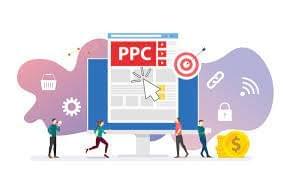PPC agency services is an internet advertiser pays a writer (often a search engine, website owner, or community of websites) when the ad is clicked on in the pay-according-to-click on (percent) variant of online advertising.
Pay-per-click is often linked with top-tier search engines like Google (such as google advertisements, amazon marketing, and microsoft advertising formerly bing advertisements). With search engine results pages (SERPS), marketers often bid on keyword phrases relevant to their target audience and pay when ads (text-based only seek ppc agency services or buying adverts that might be a blend of images and text) are clicked. Contrarily, content websites often charge a flat rate per click rather than using a bidding structure. Display classified ads, often known as banner ads, are shown on websites with related content that have consented to show advertisements. They typically no longer use pay-per-click marketing models but rather typically charge based on cost per thousand impressions (cpm).
As one of its advertising strategies, social networks including Facebook, Instagram, LinkedIn, Reddit, Pinterest, tiktok, and Twitter have also implemented pay-per-click. The amount advertisers pay depends on the writer and is often determined by two main factors: the quality of the ad and the highest price the advertiser is willing to place per click when compared to the bids of its rivals. Generally speaking, the price per click is charged more expensively for ads with greater quality, and vice versa. However, websites may provide some advertisements. When a query (keyword or phrase) matches an advertiser's keyword listing that has been placed in exceptional ad companies, or when a content site displays relevant material, an advertisement will be shown on websites that use % advertisements. In search engine results pages (serp), these advertisements—also known as subsidized hyperlinks or subsidized ads—appear next to, above, or below natural results. They may also appear wherever a web developer selects on a content page.

Even while Google and others have implemented automated measures to prevent against fraudulent clicks by rivals or dishonest web developers, the percent advertising version is vulnerable to misuse via click fraud. Pay-per-click, fee-per-influence (cpm), and price-per-order are used to assess the cost-effectiveness and profitability of internet advertising and to drive the value of conducting advertising campaigns as cheaply as possible while upholding predetermined goals. The advertiser most effectively pays for each 1000 impressions of the advertisement in terms of cost per thousand impressions (cpm). Pay-according-to-click (percent) has an advantage over value-according-to-influence in that it provides information about how successful the campaign was. A technique to gauge interest is via clicks. Pay-per-click is the preferred statistic if the main goal of an advertisement is to encourage clicks or, more specifically, drive traffic to a destination. The placement and design of the advertisement will affect click-through rates and the ensuing overall pay-per-click price. There are two main approaches for calculating pay-per-click: flat-fee and entirely bid-based. Each time, the marketer must take into account the prospective worth of a click from a certain source.
This price is determined by the kind of visitor the advertiser hopes to attract to their website and the potential benefits of that visit, which are often short- or long-term profits. As with other forms of advertising, targeting is essential. Factors that frequently come into play with percent campaigns include the target's interest (often expressed through a search term they have entered into a search engine or the content of a page they may be browsing), motive (such as whether they plan to make a purchase or not), location (for geo focused on), tool used (such as whether the user is searching from a desktop device or mobile device). continue reading…
